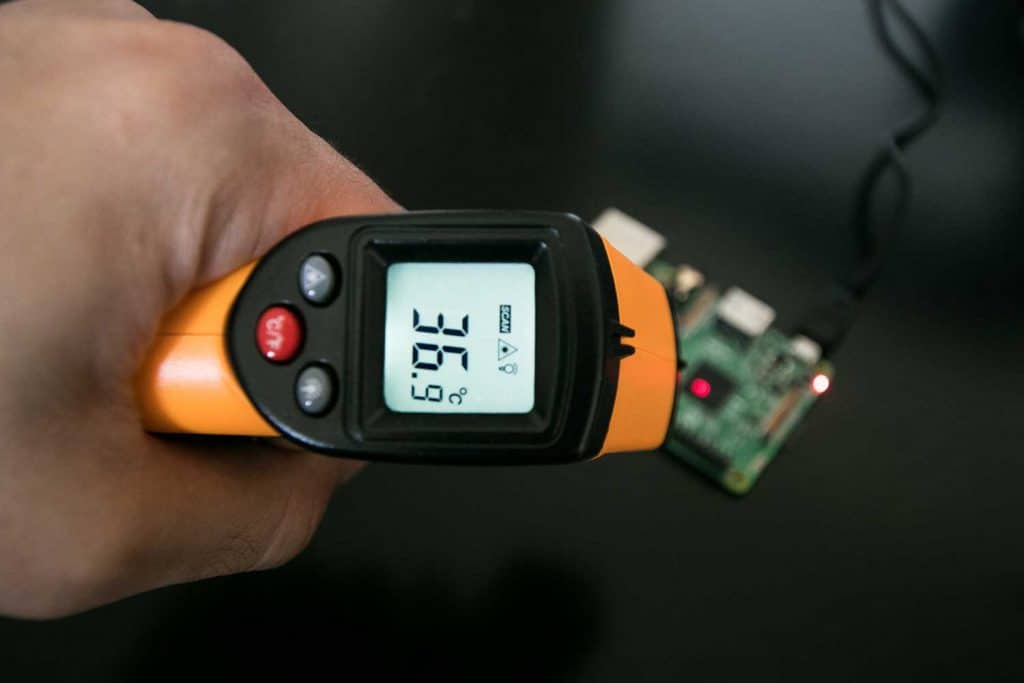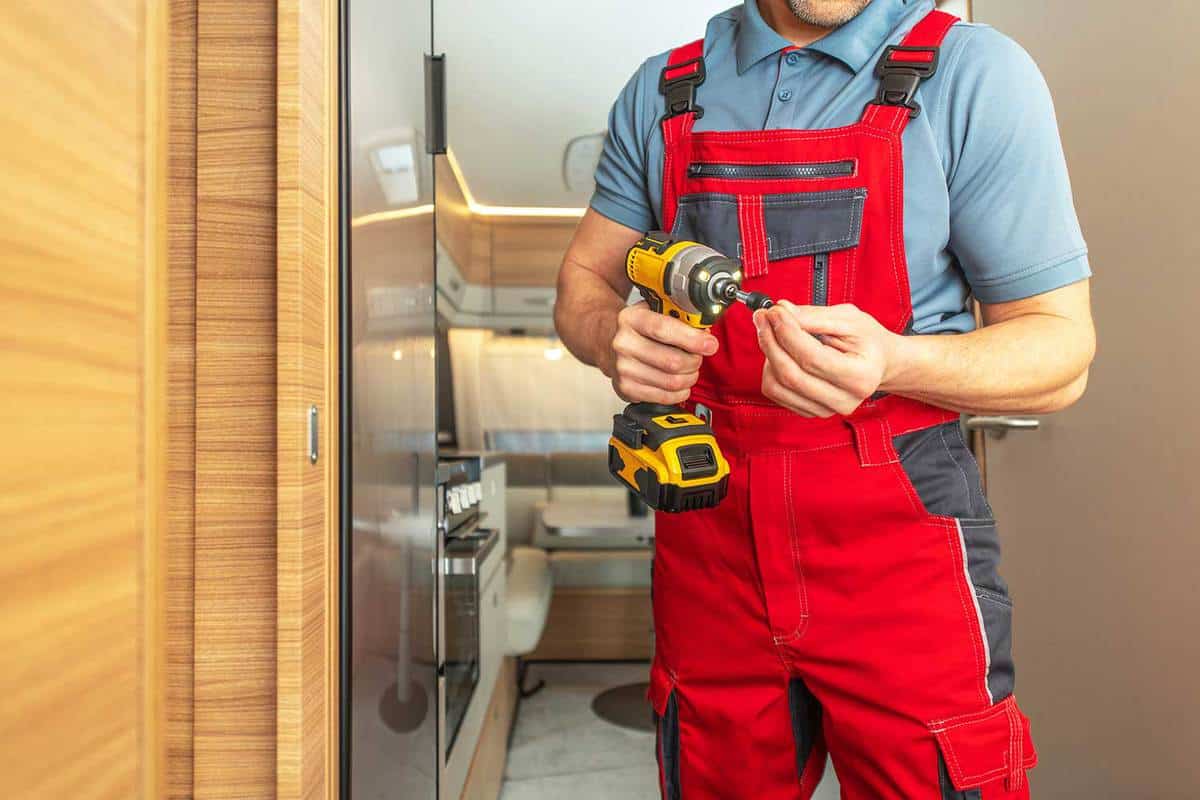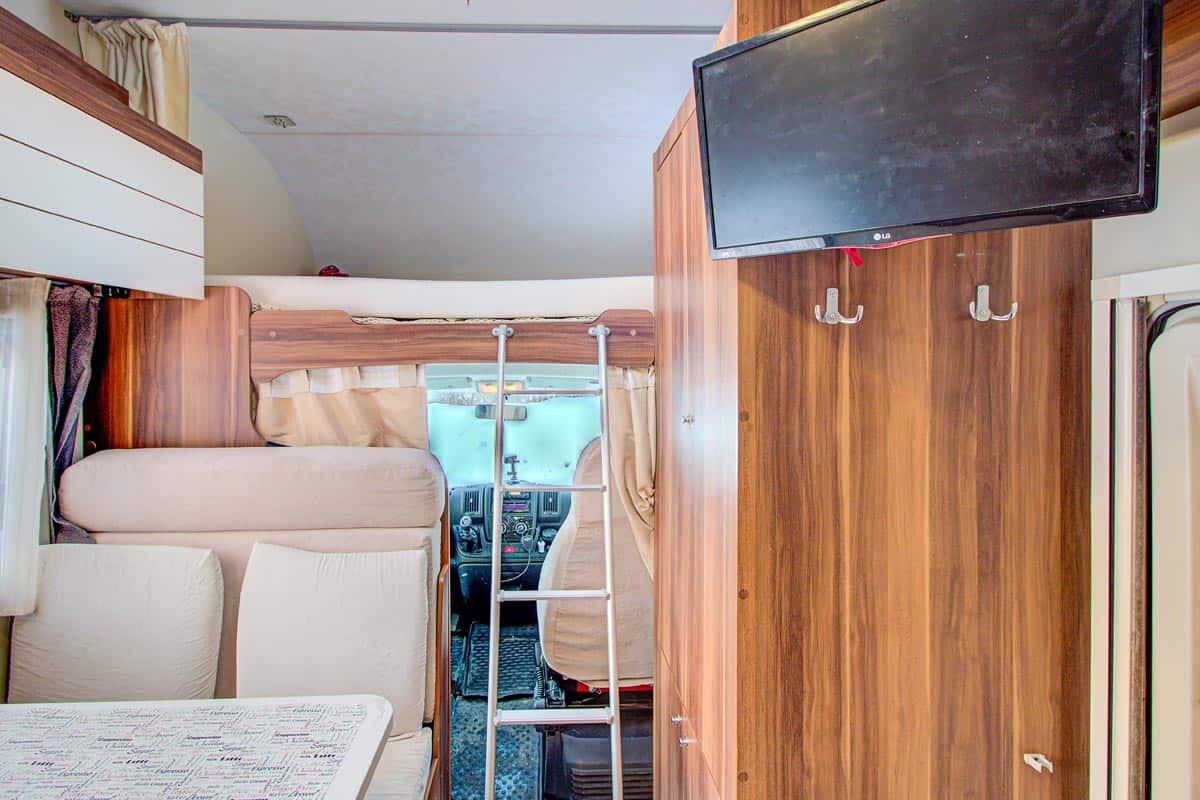With the compactness of an RV, you often need all the space you can get. So, to get the most out of your floor space, whether it's a TV or shelves, you may be considering hanging something on your RV walls. Everyone knows to look for studs in the wall of your home, but what about the walls of your RV? We've researched whether RV walls have studs and have an answer for you!
RV walls do have studs. However, unlike building walls that have studs at regular intervals, studs in RV walls are randomly placed. You can still use a stud finder to find studs in some RV walls. Other methods include using your sight or touch, using an infrared thermometer, or checking a framing diagram of the RV.
Now you know that RV walls have studs, and you have a relative idea of how to find them. However, you should keep reading as we elaborate on this and discuss why it may be trickier to find studs in RV walls than in the walls of your home. We'll also answer some other questions you might have about studs and mounting objects to your RV walls.
![A man drilling a hole into the side wall, Are There Studs In RV Walls? [And How To Find Them]](https://vehq.com/wp-content/uploads/2021/12/Are-There-Studs-In-RV-Walls-And-How-To-Find-Them-683x1024.png)
Studs in RV Walls
Hanging or mounting an object to studs ensures that it is secure. In a home, studs are often spaced 16" or 24" apart, so once you've found the first and second, you can measure for the third. However, this isn't the case for RVs. Studs in RVs are irregularly spaced and may even be as far as 36 inches apart. This can complicate how you decide to mount something in your RV.
Finding studs in RV walls
Before worrying about how to mount to your RV walls, you first need to find them. If they happen to be relatively close together, you may be able to proceed as you would in your home. We'll get into that more later. There are several ways to locate studs in your RV.
Using A Stud Finder
The most well-known method for finding studs is using a stud finder. After all, that's exactly what it is made for. Stud finders use either magnets or electricity to locate the studs in the wall. Some will detect studs by finding any changes in density behind the surface being scanned.
They are handheld devices that you pass along the wall. Some stud finders will make a noise as you near the stud, while others will use a light to indicate the edge of the stud.
Click here to see Stud Finder on Amazon.
Touching and Taking A Look At The Walls
If you don't have a stud finder, and you'd rather try to find the stud a different way, you can try feeling or looking for the stud. RV walls are thin and have some movement to them. If you gently press on the walls, you may be able to feel the stud behind them. You can also sometimes see the outline of studs from the outside of your RV on a cold morning.
RV Framing Diagram
Another method involves reaching out to the manufacturer of your RV for a framing diagram. Some can also be found online, but be sure to make sure it's the exact model you have. A framing diagram is a blueprint of the frame of your RV. It can be helpful to have on hand whenever you might need to locate a stud.
Infrared Thermometer

Other recommendations for finding studs involve using an infrared thermometer to detect temperature changes within the wall. In theory, the stud should be cooler because it is not surrounded by as much insulation.
However, we found this had mixed reviews because it was sometimes difficult to detect a large enough temperature difference to justify assuming that was the location of the studs.
Magnets
A simple but effective method involves using a strong magnet attached to a string. You simply drag the magnet along the inside wall, and when it sticks, you've found a stud! Take a look at this YouTube video to see how it's done:
How Thick are Studs in RV Walls?
Once you have found the stud, you need to know how thick they are. Otherwise, you pose the risk of drilling a nail straight through to the outside. You wouldn't be the first person to do this, as it seems it's actually a common occurrence.
Most RV walls range between one to two inches thick. This includes paneling along with the stud. The thickness of the studs will depend on the make and model of the RV. To be safe, you should use screws under one inch long. This should ensure you aren't going to drill through to the outside layer of fiberglass.
If you are able to, try contacting the RV manufacturer, they may be able to give you specifics on the measurements of the studs. You can also try measuring yourself by finding an opening or panel into the wall. You can either remove an outlet cover to do this or check a window frame, door frame, or under the bathroom sink.
Can you Drill into RV Walls?

You can drill into RV walls. However, it is important to remember that RV walls are pretty thin. If you try to drill a screw directly into the wall, you could cause cracks to form. To avoid this, you should predrill any holes. It's also a good idea to check behind the wall first if you can to see exactly what you might be drilling into.
Can you Hang Stuff on RV Walls?
You can hang stuff on RV walls. As we mentioned earlier, though, RV walls are thin and not built to hold heavy objects. Depending on what you are trying to hang, you should consider the size and weight of it and whether the wall will be able to hold the object. You should also consider whether the item will stay in place while you travel. There are several ways to hang items on your RV walls.
Screws or Nails
The best way to hang an object on an RV wall is with screws or nails. Just be sure to use the smallest nails that will allow you to hang the object adequately. This will help you avoid the dilemma we mentioned previously about drilling through to the outside of your RV.
If the object is heavy, you will need to secure it to a stud. If you don't, you may end up with a big and expensive mess to clean up if it causes your wall to collapse.
Since studs in an RV are inconsistently spaced, you can also try attaching a thicker piece of wood between the two to act as a mount that you can safely attach other objects to.
Velcro, Command Strips, or Hooks
If you want to avoid drilling into the wall for lighter objects, you can try using command strips, velcro, or sticky-backed hooks. Be careful with which surfaces you use these on though, as it may pull off or damage part of the wall's surface.
Click here to see Command Strips on Amazon.
Can you Mount a TV on an RV wall?

You can mount a TV on an RV wall. In fact, there are mounts designed exactly for this. Your TV will need to be mounted to the studs, though, because the wall alone will not be able to support the weight of the TV. Some RV's will have an area specifically designed for a TV to be mounted. As always, check with your manufacturer as this varies by make and model.
Click here to see RV TV Mount on Amazon.
Make Sure The Mount Locks
If you choose to use a regular TV mount, which you can do, it's advisable to remove the TV while you are on the road. This will stop it from swinging around during transit which could cause damage to the TV or other parts of your RV. RV TV mounts come with an arm that is able to be locked in place to prevent the motion.
Final Thoughts
We hope you've found this article useful. By now, you should know that RV's do, in fact, have studs, and there are a number of ways to locate them. Hopefully, from our list, you've found a method that will work for you to help you locate the studs in your RV walls, and you'll be hanging all kinds of things soon. Good luck!
For more reading on the topic of RVs, check out some of our other blog posts below:



